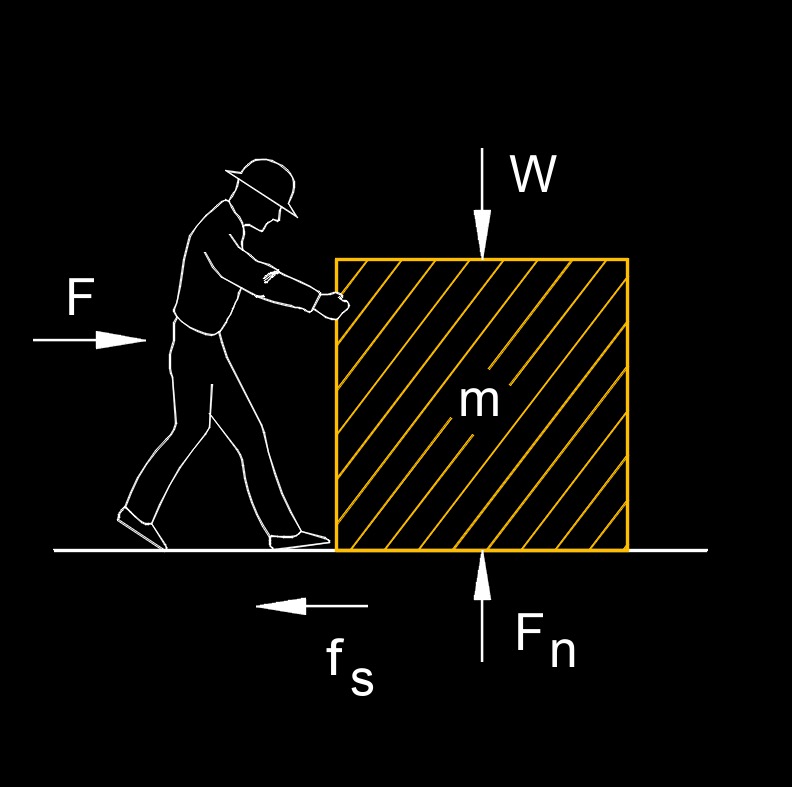Static Friction Coefficient
Static friction coefficient formula |
||
|
\( \mu_s \;=\; \dfrac{ f_s }{ F_n }\) (Static Friction Coefficient) \( f_s \;=\; \mu_s \cdot F_n \) \( F_n \;=\; \dfrac{ f_s }{ \mu_s }\) |
||
| Symbol | English | Metric |
| \( \mu_s \) (Greek symbol mu) = Static Friction Coefficient | \( dimensionless \) | \( dimensionless \) |
| \( f_s \) = Static Friction | \( lbf \) | \(N\) |
| \( F_n \) = Normal Force | \( lbf \) | \(N\) |
 Static friction coefficient, abbreviated as \(\mu_s\) (Greek symbol mu), a dimensionless number, also called coefficient of static friction, is the amount of force required to overcome the initial resistance between two surfaces in contact before they start to slide or move relative to each other. It's a fundamental concept in physics and engineering that characterizes the interaction between surfaces under static conditions.
Static friction coefficient, abbreviated as \(\mu_s\) (Greek symbol mu), a dimensionless number, also called coefficient of static friction, is the amount of force required to overcome the initial resistance between two surfaces in contact before they start to slide or move relative to each other. It's a fundamental concept in physics and engineering that characterizes the interaction between surfaces under static conditions.
The static friction coefficient varies depending on the nature of the surfaces in contact and their roughness. Rougher surfaces generally have a higher static friction coefficient because the irregularities in the surfaces interlock and resist relative motion more effectively. Smoother surfaces tend to have a lower static friction coefficient.
The static friction coefficient sets the threshold for whether an object will stay at rest or start moving when a force is applied to it parallel to the surface. If the applied force is less than or equal to the product of the normal force and the static friction coefficient, the object remains at rest. Once the applied force exceeds this threshold, the object overcomes static friction and begins to move.

